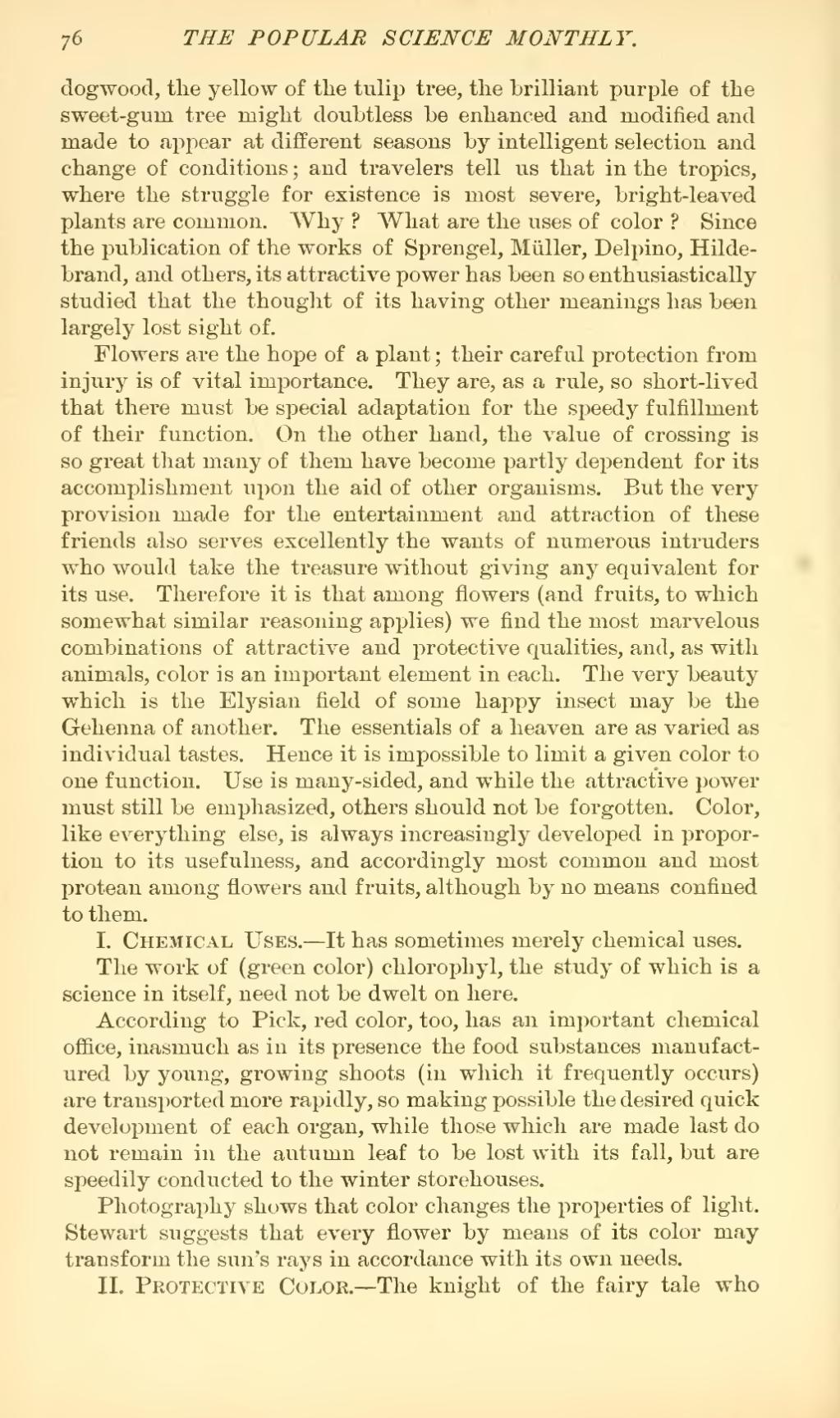dogwood, the yellow of the tulip tree, the brilliant purple of the sweet-gum tree might doubtless be enhanced and modified and made to appear at different seasons by intelligent selection and change of conditions; and travelers tell us that in the tropics, where the struggle for existence is most severe, bright-leaved plants are common. Why? What are the uses of color? Since the publication of the works of Sprengel, Müller, Delpino, Hildebrand, and others, its attractive power has been so enthusiastically studied that the thought of its having other meanings has been largely lost sight of.
Flowers are the hope of a plant; their careful protection from injury is of vital importance. They are, as a rule, so short-lived that there must be special adaptation for the speedy fulfillment of their function. On the other hand, the value of crossing is so great that many of them have become partly dependent for its accomplishment upon the aid of other organisms. But the very provision made for the entertainment and attraction of these friends also serves excellently the wants of numerous intruders who would take the treasure without giving any equivalent for its use. Therefore it is that among flowers (and fruits, to which somewhat similar reasoning applies) we find the most marvelous combinations of attractive and protective qualities, and, as with animals, color is an important element in each. The very beauty which is the Elysian field of some happy insect may be the Gehenna of another. The essentials of a heaven are as varied as individual tastes. Hence it is impossible to limit a given color to one function. Use is many-sided, and while the attractive power must still be emphasized, others should not be forgotten. Color, like everything else, is always increasingly developed in proportion to its usefulness, and accordingly most common and most protean among flowers and fruits, although by no means confined to them.
I. Chemical Uses.—It has sometimes merely chemical uses.
The work of (green color) chlorophyl, the study of which is a science in itself, need not be dwelt on here.
According to Pick, red color, too, has an important chemical office, inasmuch as in its presence the food substances manufactured by young, growing shoots (in which it frequently occurs) are transported more rapidly, so making possible the desired quick development of each organ, while those which are made last do not remain in the autumn leaf to be lost with its fall, but are speedily conducted to the winter storehouses.
Photography shows that color changes the properties of light. Stewart suggests that every flower by means of its color may transform the sun's rays in accordance with its own needs.
II. Protective Color.—The knight of the fairy tale who
